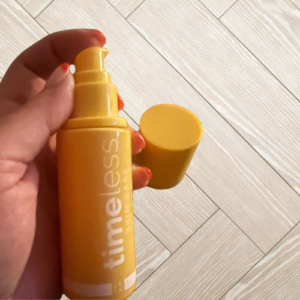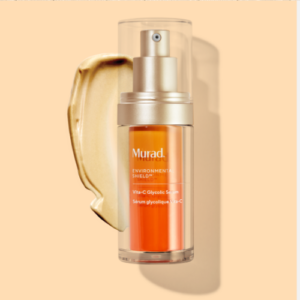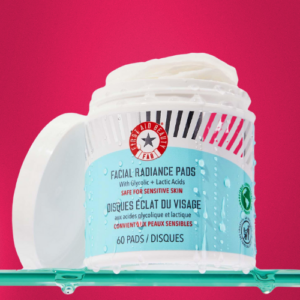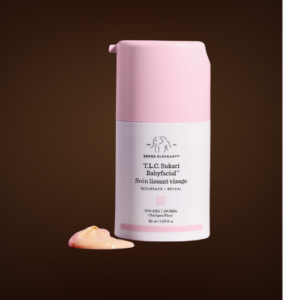Did you know that by the time you reach your 30s, your skin can start losing up to 1% of its collagen every single year? That’s a staggering statistic that highlights how crucial it is to prioritize your skincare routine, especially when it comes to exfoliation. If you’ve ever looked in the mirror and felt disheartened by dullness, fine lines, or uneven texture, you’re not alone. Many of us grapple with these challenges as we age. The good news is that with the right exfoliation routine, you can help revive your skin’s youthful glow and combat those signs of aging. In this post, we’ll delve into how often you should exfoliate to achieve optimal anti-aging benefits, tailored to your unique skin type and needs. Let’s get glowing together!
The table of content
Understanding exfoliation and its benefits.
Exfoliation is a crucial step in any skincare routine, helping to reveal brighter, healthier skin beneath the surface. By removing dead skin cells, exfoliation promotes skin renewal, improves texture, and supports various anti-aging efforts. In this section, we will explore the different types of exfoliation, their benefits, and practical examples of products you can incorporate into your skincare regimen.
Types of exfoliation.
Exfoliation can be broadly classified into two main categories: physical and chemical. Understanding these types will help you choose the right method for your skin type and concerns.
* Physical exfoliation.
Physical exfoliation involves the use of scrubs, brushes, or tools that manually slough off dead skin cells. This method is often immediate and provides instant results. Here are some popular physical exfoliants:
- St. Ives Fresh Skin Apricot Scrub: A classic choice, this scrub contains walnut shell powder that aids in buffing away dead skin. However, it’s essential to use it gently to avoid irritation.
- Clarisonic Mia Smart Cleansing Brush: This device uses sonic technology to cleanse and exfoliate simultaneously, making it an excellent investment for those seeking a deeper clean.
– Benefits of physical exfoliation.
- Immediate smoothness and glow
- Improved circulation, which can promote skin health
- Can help clear clogged pores
* Chemical exfoliation.
Chemical exfoliation uses acids or enzymes to dissolve dead skin cells without the need for scrubbing. This method can be more effective for certain skin types and conditions, especially sensitive skin. Some notable chemical exfoliants include:
-
- The Ordinary Glycolic Acid 7% Toning Solution: This toning solution contains glycolic acid, an alpha hydroxy acid (AHA), which helps to improve skin texture and radiance.
- Paula’s Choice Skin Perfecting 2% BHA Liquid Exfoliant: Formulated with salicylic acid, this product is excellent for oily and acne-prone skin, as it penetrates pores and helps clear breakouts.
– Benefits of Chemical Exfoliation:
- Deeper penetration into the skin layers
- Can target specific issues like acne or pigmentation
- Generally more gentle than physical exfoliants
Benefits of regular exfoliation.
Incorporating exfoliation into your skincare routine can yield significant benefits, particularly when done regularly. Here’s a closer look at how exfoliation supports skin health:
* Boosts collagen production.
Regular exfoliation can stimulate collagen production, which is vital for maintaining skin elasticity and firmness. By encouraging new cell turnover, exfoliation helps combat the visible signs of aging. For best results, consider using products like Timeless Skin Care Vitamin C Serum after exfoliation to enhance collagen synthesis.

* Enhances product absorption.
When dead skin cells are removed, your skincare products can penetrate deeper and work more effectively. This means that serums, moisturizers, and treatments will be able to deliver their benefits more efficiently. For example, applying Neutrogena Hydro Boost Water Gel after exfoliation can provide your skin with an intense burst of hydration.
* Promotes a brighter complexion.
Exfoliation can help fade dark spots and uneven skin tone, resulting in a more luminous complexion. Products like Murad Vita-C Glycolic Serum – Environmental Shield Skin Brightening Vitamin C Face Serum can be incredibly effective when used in conjunction with regular exfoliation to enhance brightness.

* Prevents breakouts.
By clearing away dead skin cells and preventing clogged pores, exfoliation can significantly reduce the likelihood of breakouts. This is particularly beneficial for acne-prone skin types. COSRX AHA/BHA Clarifying Treatment Toner provides gentle exfoliation while keeping the skin clear.
* Improves skin texture.
Regularly exfoliating can result in smoother skin texture and a reduction in the appearance of fine lines and wrinkles. Using products like Drunk Elephant T.L.C. Sukari Babyfacial can help achieve that softer, more refined skin feel.
Key points to remember.
When considering exfoliation, keep these essential tips in mind:
- Frequency: Most skin types benefit from exfoliating 1-3 times per week. Sensitive skin may require less frequent exfoliation.
- Choose Wisely: Select a product that matches your skin type—oily, dry, sensitive, or combination.
- Follow Up: Always apply a hydrating moisturizer or serum after exfoliating to replenish moisture.
- Sun Protection: Exfolated skin can be more sensitive to sun exposure, so wearing sunscreen like EltaMD UV Clear Broad-Spectrum SPF 46 is crucial.
By understanding the types of exfoliation and their benefits, you can curate a skincare routine that promotes healthy, vibrant skin. Remember, consistency is key, and the right products can make all the difference!
Determining your skin type.
Understanding your skin type is crucial for establishing an effective skincare routine, especially when it comes to exfoliation. With various skin types—normal, dry, oily, combination, and sensitive—each one has its unique characteristics that dictate how often you should exfoliate. Let’s dive into each skin type and discuss guidelines, along with recognizing signs of over-exfoliation.
Normal skin.
* Characteristcs.
Normal skin is well-balanced, not too oily nor too dry. It typically has minimal imperfections and a smooth texture.
* Exfoliation frequency.
- How Often: 1-2 times a week
- Recommended Products:
- Paula’s Choice Skin Perfecting 2% BHA Liquid Exfoliant: A gentle yet effective product that helps maintain balance without over-drying.
* Practical tips.
- Monitor how your skin feels after exfoliating. If it remains smooth without irritation, you may continue your routine.
Dry skin.
* Characteristics.
Dry skin often feels tight, may show flaky patches, and can be prone to irritation. It lacks sufficient moisture and may have rough texture.
* Exfoliation frequency.
- How Often: Once a week
- Recommended Products:
- Tatcha The Rice Polish: A gentle exfoliant that is hydrating and designed to remove dead skin without stripping moisture.
* Practical tips.
- Always follow with a rich moisturizer like CeraVe Moisturizing Cream to lock in hydration after exfoliating.
Oily skin.
* Characteristics.
Oily skin appears shiny, especially in the T-zone (forehead, nose, and chin), and is more prone to acne and large pores.
* Exfoliation frequency.
- How Often: 2-3 times a week
- Recommended Products:
- The Ordinary AHA 30% + BHA 2% Peeling Solution: A powerful chemical exfoliator that helps clear out pores and reduce excess oil.
* Practical tips.
- Be cautious not to use exfoliants that are too harsh, as they can trigger more oil production. Balance is key!
Combination skin.
* Characteristics.
Combination skin features both oily and dry areas—generally oily in the T-zone and dry or normal on the cheeks.
* Exfoliation frequency.
- How Often: 1-2 times a week, depending on the area
- Recommended Products:
- Drunk Elephant T.L.C. Sukari Babyfacial: This mask is versatile and can be used on the oily T-zone more frequently than on dry areas.
* Practical tips.
- Tailor your exfoliation to different areas of your face; use stronger exfoliants on the T-zone and gentler products on the cheeks.
Sensitive skin.
* Characteristics.
Sensitive skin can react easily to products, leading to redness, itching, or burning sensations. It requires extra care and gentleness.
* Exfoliation frequency.
- How Often: Once every two weeks
- Recommended Products:
- First Aid Beauty Facial Radiance Pads: These pads contain lactic and glycolic acids and are gentle enough for sensitive skin.

* Practical tips.
- Always conduct a patch test with any new exfoliant, and if irritation occurs, cease usage immediately.
Recognizing over-exfoliation.
Over-exfoliation can lead to redness, irritation, and increased sensitivity. Here are some signs to watch for:
- Redness: Persistent redness that lasts after exfoliation.
- Flakiness: Excessive peeling or flakiness that doesn’t resolve quickly.
- Tightness: A feeling of tightness that persists even after moisturizing.
- Breakouts: An increase in breakouts or irritation.
* Adjusting your routine.
If you notice any of these signs, consider:
- Reducing the frequency of exfoliation.
- Switching to a gentler exfoliant, such as Neutrogena Hydro Boost Exfoliating Cleanser for sensitive or dry skin.
- Incorporating soothing ingredients like aloe vera or chamomile to help calm irritation.
By understanding your skin type and adhering to these tailored exfoliation guidelines, you can ensure your skincare routine yields optimal results, leaving your skin healthy and radiant.
Choosing the right exfoliation method.
Exfoliation is a pivotal step in any skincare routine, helping to remove dead skin cells and promote a smoother, more radiant complexion. With numerous products available, it can be overwhelming to choose the right method for your skin type. In this section, we’ll delve into the differences between physical and chemical exfoliants, their effectiveness, and how to integrate them into your routine safely.
Understanding physical exfoliants.
Physical exfoliants, also known as mechanical exfoliants, utilize physical particles to manually scrub away dead skin. Common forms include scrubs, brushes, and exfoliating gloves. Here are some popular physical exfoliant products:
- St. Ives Apricot Scrub: A classic choice known for its gritty texture. While effective for some, it can be harsh for sensitive skin.
- Dermalogica Daily Microfoliant: A gentle powder that activates upon contact with water, making it suitable for all skin types, including sensitive skin.
- Foreo Luna 3: A silicone facial cleansing brush that offers a physical exfoliation experience while deep-cleansing the skin.
* Pros and cons of physical exfoliation.
| Pros | Cons |
|---|---|
| Instant results for smoother skin | Can cause micro-tears if too abrasive |
| Easy to use and widely available | Not suitable for sensitive skin types |
| Provides a sensory experience | Requires regular replacement (like brushes) |
Exploring chemical exfoliants.
Chemical exfoliants work by using acids or enzymes to dissolve dead skin cells. The most common types include Alpha Hydroxy Acids (AHAs) and Beta Hydroxy Acids (BHAs):
- AHAs: Water-soluble acids derived from fruits, suitable for dry or sun-damaged skin. Popular examples include:
- The Ordinary Glycolic Acid 7% Toning Solution: An affordable option that brightens and smooths the skin’s texture.
- Paula’s Choice Skin Perfecting 8% AHA Gel Exfoliant: Known for its lightweight gel texture, this product helps diminish the appearance of fine lines.
- BHAs: Oil-soluble acids ideal for oily or acne-prone skin, as they penetrate deep into pores. Notable products include:
- Neutrogena Oil-Free Acne Wash with Salicylic Acid: A gentle cleanser that helps control acne while exfoliating.
- COSRX BHA Blackhead Power Liquid: Excellent for unclogging pores and reducing blackheads without irritation.
* Pros and cons of chemical exfoliation.
| Pros | Cons |
|---|---|
| More targeted treatment for specific concerns | May take longer to see results |
| Generally gentler on the skin | Can cause irritation if overused |
| Suitable for a range of skin types | Requires patch testing for sensitive skin |
Suitability for different skin types.
Choosing the right exfoliation method ultimately depends on your skin type and concerns:
- Oily and Acne-Prone Skin: BHAs like salicylic acid are ideal, as they can penetrate pores and help reduce breakouts. Consider incorporating Paula’s Choice Skin Perfecting 2% BHA Liquid Exfoliant into your routine for gentle yet effective exfoliation.
- Dry or Sensitive Skin: Opt for gentle AHAs like lactic acid, which provide hydration while exfoliating. Mild exfoliating products like Drunk Elephant T.L.C. Framboos Glycolic Night Serum can help maintain moisture levels.
- Combination Skin: A balanced approach using both types can be effective. Try alternating between a physical scrub like Dermalogica Daily Microfoliant and a chemical exfoliant such as The Ordinary Lactic Acid 10% + HA.
Incorporating exfoliants into your routine.
To avoid irritation, it’s important to introduce exfoliants gradually:
- Start Slow: Begin with 1-2 times a week and assess how your skin reacts. If well-tolerated, gradually increase frequency.
- Follow Up with Moisturizer: Always apply a hydrating product after exfoliation to restore moisture.
- Use Sunscreen: Exfoliation can increase skin sensitivity, so daily SPF use is crucial to protect your skin from sun damage.
Final tips for healthy exfoliation.
- Always perform a patch test when trying a new product to gauge your skin’s reaction.
- Avoid using multiple exfoliants simultaneously to prevent over-exfoliation.
- Listen to your skin; if it feels irritated or overly dry, reduce the frequency or switch to a gentler product.
By understanding the differences between physical and chemical exfoliants, you can make informed decisions that suit your skin type and concerns, leading to a healthier, more radiant complexion.
Finding the right balance for youthful skin.
In conclusion, finding the right exfoliation routine is crucial for reaping the optimal anti-aging benefits for your skin. By tailoring your approach to your specific skin type and preferences, you can effectively improve your skin’s texture and tone while boosting collagen production. Keep in mind that your skin is unique, so be attentive to its needs and adjust your exfoliation schedule accordingly. With a little care and consistency, you’ll be on your way to a more youthful, radiant complexion.
Refer: Effective Dry Skin Care: 8 Essential Steps You Need to Follow

